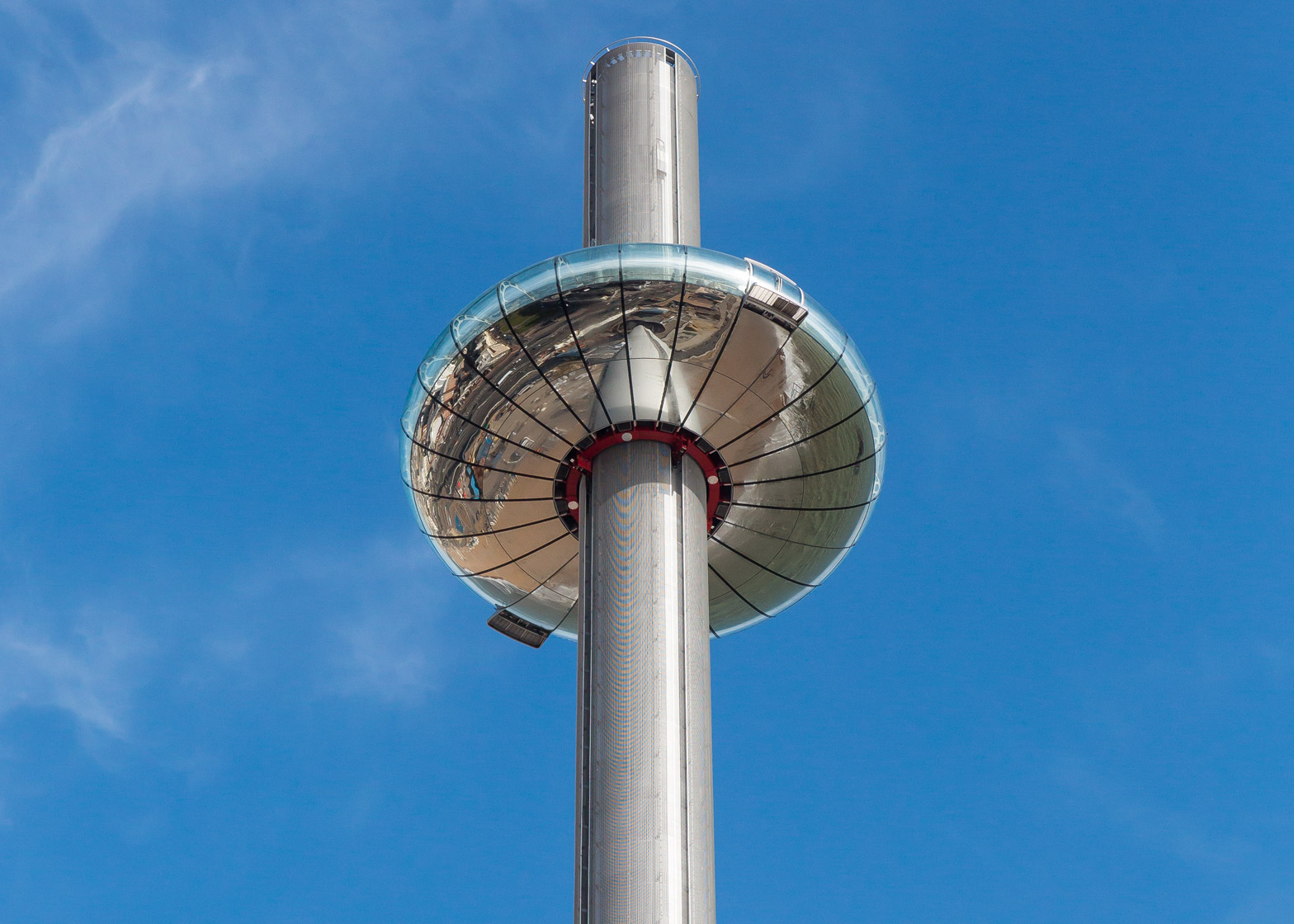A giant glass-and-steel doughnut that will transport passengers up and down a 162-metre-high pole is undergoing final tests ahead of its opening according to Marks Barfield Architects, who designed the British Airways i360 viewing tower.
The installation of the viewing pod was completed yesterday on the tower in Brighton, England, paving the way for the attraction to open later this summer.
All that is left now is for the construction team to carry out a series of tests before the huge elevator is ready to transport its first passengers 138 metres up into the sky.
"Today the team reached a major milestone with the pod reaching its maximum height for the first time," said David Marks, one of the two co-founders of Marks Barfield Architects.
Over the next few weeks, technicians will carry out checks of the cladding, the electrical systems and the counterweight, with tests taking place inside the tower, in the control room and in the machine room.
"Testing and commissioning will continue for a few more weeks," added Marks.
Described by the promotors as the "world's tallest moving observation tower", the British Airways-sponsored tower is being built on the seafront in Brighton and will offer views up to 42 kilometres in all directions.
It is also the world's most slender tower, with a diameter of just 3.9 metres at its widest point.
Marks and his partner Julia Barfield were also the architects behind the London Eye, completed in 2000 to coincide with the Millennium.
The i360's 18-metre-wide pod – completed earlier this year – is 10 times bigger than the capsules of the London Eye and is expected to hold up to 200 people at a time. Its drive mechanism and control system are built by French lift specialist Poma.
The attraction will also include a visitor centre with a 400-seat restaurant, a gift shop, a children's play area, an exhibition gallery, and facilities for conferences and other events.
Marks Barfield Architects is based in southwest London. Other projects by the studio include an elevated walkway through the trees of Kew Gardens and a proposed research centre for the Amazon Jungle with a bulging bamboo observation tower and more than nine kilometres of treetop bridges.
The studio first drew up plans for the i360 in 2005, but the project stalled in 2008 as a result of the global financial crisis. It was revived in 2014 by the local council, majority-funded by a loan from the UK's debt management office.

